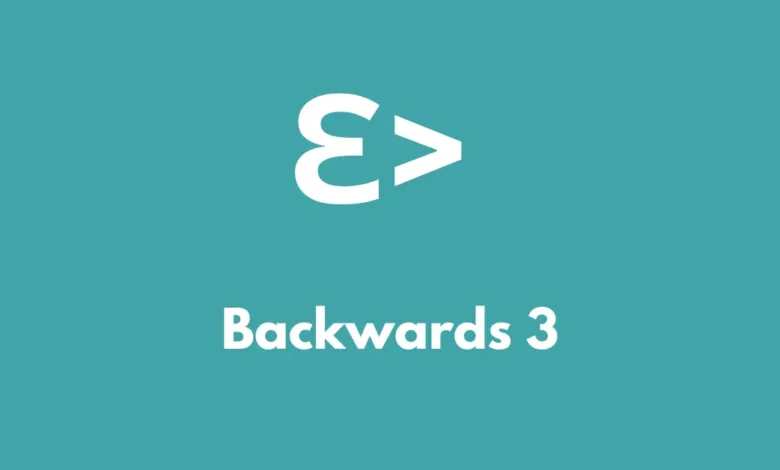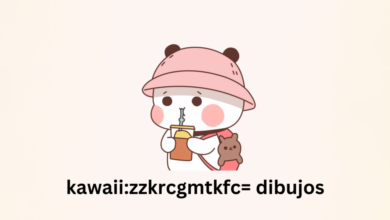Backward 3: Why This Mirror Image of a Number is Trending

Introduction
In a world filled with symbols and numbers that often convey complex meanings, the backward 3 (Ɛ) stands out as a curious and intriguing character. Its appearance might seem trivial at first glance, yet it holds a wealth of significance across various fields such as mathematics, linguistics, art, and modern culture. As the digital age evolves, the usage of symbols like the backward 3 continues to proliferate, making it relevant and often trendy. This article delves into the multifaceted nature of the backward 3, exploring its definitions, mathematical and linguistic significance, cultural presence, and hidden meanings.
The aim is to unravel the layers of this seemingly simple symbol and to understand why it has become a point of fascination in our society. From its origins to its symbolic interpretations, the backward 3 is more than just a reversed number—it is a symbol rich with context and meaning. As we explore each facet of the backward 3, we’ll also discuss its implications in various aspects of life, making the discussion both informative and engaging.
- What is the Backwards 3?
The backward 3, often represented as Ɛ, is simply the number three flipped horizontally. It has garnered attention not just for its unique appearance but also for its varied applications in different fields. At its core, the backward 3 serves as an example of how a simple inversion can transform meaning. This transformation has roots in history, where symbols were often modified to convey specific concepts or sounds.
Historically, symbols like the backward 3 have been utilized in many cultures, often representing ideas or sounds distinct from their standard counterparts. For instance, in various artistic forms, numbers are frequently stylized or altered to evoke specific emotions or to fit into a creative vision. In some instances, the backward 3 has been associated with the concept of duality—indicating a relationship between two states of being, a common theme in various philosophical traditions.
In addition to its historical significance, it is crucial to understand common misconceptions surrounding the backward 3. Many people might think it serves no purpose beyond being a quirky visual or a typographical error. However, its applications are both profound and diverse, from being utilized in branding to appearing in various art forms. Understanding these facets allows for a deeper appreciation of how such symbols can enrich our visual and conceptual language.
- Mathematical and Linguistic Significance
The backward 3 possesses notable significance in both mathematical and linguistic contexts, elevating its status from mere curiosity to a meaningful symbol. In mathematics, Ɛ has been utilized as a representation of a specific set membership. While not as commonly recognized as other mathematical symbols, it plays a role in specialized contexts where clarity in representation is essential. For instance, in set theory, the symbol can indicate that an element belongs to a certain set, enhancing the precision and readability of mathematical expressions.
In linguistic studies, the backward 3 finds its relevance in the International Phonetic Alphabet (IPA). It symbolizes the open-mid front unrounded vowel sound, a crucial component in the pronunciation of many words across various languages. This sound is prevalent in languages like French, where words such as “mère” (mother) feature the open-mid front unrounded vowel. By using the backward 3 in phonetics, linguists can convey pronunciation accurately, thus helping learners and scholars navigate the complexities of sound and language.
The interplay between mathematics and language showcases the versatility of the backward 3, illustrating how symbols can transcend their initial context. Both fields utilize the backward 3 to enhance understanding, making it a valuable asset in their respective domains. As we examine its applications, it becomes evident that the backward 3 serves as a bridge between abstract concepts and practical usage, underscoring its importance in our understanding of both numerical and verbal languages.
- Backward 3 in Modern Culture and Trends
In contemporary society, the backward 3 has emerged as a symbol of modern culture, finding a place in various forms of digital communication, graphic design, and branding. As the internet has transformed how we communicate, symbols like the backward 3 have gained traction in online spaces, particularly in usernames and creative representations. This trend reflects a growing desire for uniqueness and individuality in a digital landscape filled with repetition and conformity.
Graphic designers often utilize the backward 3 in logos and branding to convey a sense of creativity and innovation. The flipped number offers a distinct visual element that captures attention, making it an appealing choice for companies looking to stand out in crowded markets. Its unique shape and unfamiliar appearance create a memorable impression, which is crucial in today’s fast-paced advertising environment. The ability to evoke curiosity and intrigue through design has led many brands to adopt the backward 3 as part of their identity.
Moreover, the backward 3 has found its way into artistic expressions, such as graffiti and tattoos. Artists frequently use this symbol to convey personal meaning or to make a statement about identity and self-expression. Its presence in these forms of art underscores its versatility and relevance in contemporary culture. As society continues to evolve, the backward 3 serves as a testament to the ever-changing landscape of symbols and meanings, adapting to the preferences and trends of modern life.
- Hidden Meanings and Symbolism of Backwards 3
The backward 3 carries hidden meanings that extend beyond its mathematical and linguistic uses. In various belief systems, numbers often possess symbolic significance, and the number three is no exception. Traditionally, the number three represents harmony, wisdom, and understanding in many cultures. When reversed, the backward 3 can be interpreted as a representation of duality and balance, emphasizing the idea that opposites can coexist and complement each other.
In numerology, the number three is associated with creativity and self-expression. This connection amplifies when considering the backward 3, as it embodies the idea of reimagining traditional concepts through a new lens. This reinterpretation encourages individuals to explore their creativity and challenge conventional norms, urging them to look beyond surface appearances.
Additionally, the backward 3 finds its place in esoteric traditions, often utilized in cryptic messages and symbols. Its unique form lends itself to mystery, making it an appealing choice for those interested in the occult or hidden knowledge. This aspect invites further exploration into the relationship between symbols and meanings, highlighting how something as simple as a flipped number can carry deep philosophical implications.
Conclusion
The backward 3 is a multifaceted symbol that transcends its initial appearance as a simple reversal of the number three. From its mathematical and linguistic significance to its representation in modern culture, art, and symbolism, backward 3 serves as a compelling example of how a single character can hold a wealth of meaning. Its ability to evoke curiosity, intrigue, and deeper understanding speaks to the power of symbols in human communication and expression.
As we continue to navigate a world increasingly defined by visual communication, symbols like the backward 3 will likely evolve further, adapting to new contexts and interpretations. Understanding its diverse applications not only enriches our knowledge of this specific symbol but also invites us to appreciate the broader landscape of symbolism and meaning in our lives.
YOU READ ALSO MORE
India National Cricket Team vs England Cricket Team Match Scorecard




